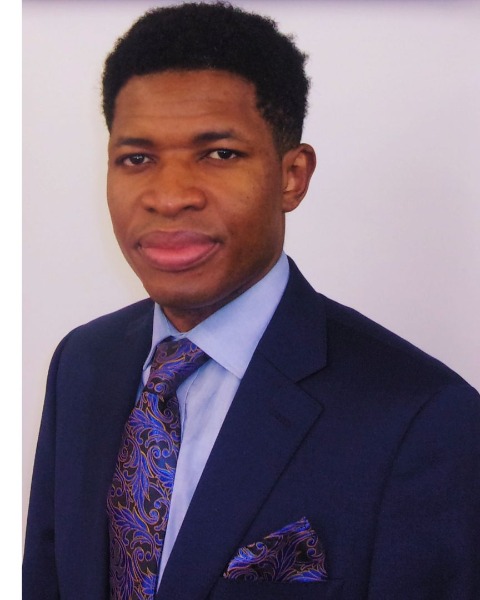Education/Quality/Wellness
Category: Scientific Abstract: Oral/Poster
Personal and Professional Factors Affecting Academic Productivity of Cardiothoracic Surgeons at an Academic Institution
I. D. Chinedozi1, E. L. Larson2, A. Y. Lee3, J. Sangalang1, N. Athipathy4, Z. Darby1, J. Kang1, J. Briscoe5, H. Rando6, K. Lobner7, D. Alejo8, J. Lawton1
1Division of Cardiac Surgery, Department of Surgery, Johns Hopkins University School of Medicine, Baltimore, Maryland 2Johns Hopkins University School of Medicine, Ankeny, Iowa 3University of Hawaii John A. Burns School of Medicine, Honolulu, Hawaii 4University of South Florida, Baltimore, Maryland 5Georgetown University, Washington, District of Columbia 6The Johns Hopkins Hospital, Baltimore, Maryland 7Johns Hopkins University, Baltimore, Maryland 8John Hopkins Cardiac Surgery, Fallston, Maryland
1Division of Cardiac Surgery, Department of Surgery, Johns Hopkins University School of Medicine, Baltimore, Maryland 2Johns Hopkins University School of Medicine, Ankeny, Iowa 3University of Hawaii John A. Burns School of Medicine, Honolulu, Hawaii 4University of South Florida, Baltimore, Maryland 5Georgetown University, Washington, District of Columbia 6The Johns Hopkins Hospital, Baltimore, Maryland 7Johns Hopkins University, Baltimore, Maryland 8John Hopkins Cardiac Surgery, Fallston, Maryland

Ifeanyi D. Chinedozi, MD
Postdoctoral Fellow
Division of Cardiac Surgery, Department of Surgery, Johns Hopkins University School of Medicine
Baltimore, Maryland, United States
Presenting Author(s)
Disclosure(s):
Ifeanyi D. Chinedozi, MD: No financial relationships to disclose
Purpose: Academic productivity has been linked to career advancement among cardiothoracic (CT) surgeons. While recent literature has focused on publicly available bibliographic data, we aimed to directly examine faculty curriculum vitae (CV) followed by targeted surveys to highlight non-publicly available and otherwise subtle extracurricular engagements and social factors impacting productivity.
Methods: Attending CT surgeons at 2 hospitals within one academic institution were included. With informed consent and IRB approval, Curriculum Vitae (CVs), bibliographic analyses, responses from a detailed survey assessing family structure, care responsibilities at home, community commitments, experiences with prior mentors, and research activities were queried. The entirety of each surgeon’s professional life, from pre-fellowship training years through all academic ranks was included. Trends in publications, awarded grants, and number of mentees through various academic ranks were noted. Kruskal-Wallis test was used to evaluate for differences between various academic profiles.
Results: 18 CVs were examined (95% response rate). A majority of CT faculty were male (82%), white (71%) and not Hispanic/Latino (100%). 82% were married with children (76%). Range of number of children was 0-3, mean 1.8. Among the faculty, 8 (44%) were assistant professors, 5 (28%) were associate professors, and 5 (28%) were professors. Respondents’ mean attending years were 16, 16 and 29 years, respectively (p = 0.12). An estimated average of 18% of attending time was spent in academic research vs clinical duties. H-index increased with academic rank (16 vs. 23 vs. 53, p = 0.004). Mean number of publications decreased between assistant and associate professor ranks, but sharply increased after promotion to full professor (p < 0.001). Cumulative mean grant funding increased significantly between ranks ($13,605,190 vs. $30,382,593 vs. $31, 829,016, p = 0.01). However, the mean number of mentees listed on CVs did not differ between ranks (3.1 vs. 2.2 vs. 3.4, p = 0.23), needing further investigation. A vast majority attributed prior mentorship experience with their motivation for academic surgery. Most surgeons cited the difficulty of balancing clinical responsibilities with academic productivity as a major struggle. Interestingly, only 52% noted that they spent time on family events.
Conclusion: The majority of academic CT surgeons surveyed noted participation in extracurricular or community activities. However, only 52% noted participation in family activities. Prior mentorship experience was the most frequent reason for pursuing academic surgery, and the challenge of balancing clinical vs research duties ranks atop the deterrents for research engagement. Targeted mentorship and sponsorship are important for academic success among academic CT surgeons. However, mentorship regarding importance of work life balance and family time may be lacking.
Identify the source of the funding for this research project: None
